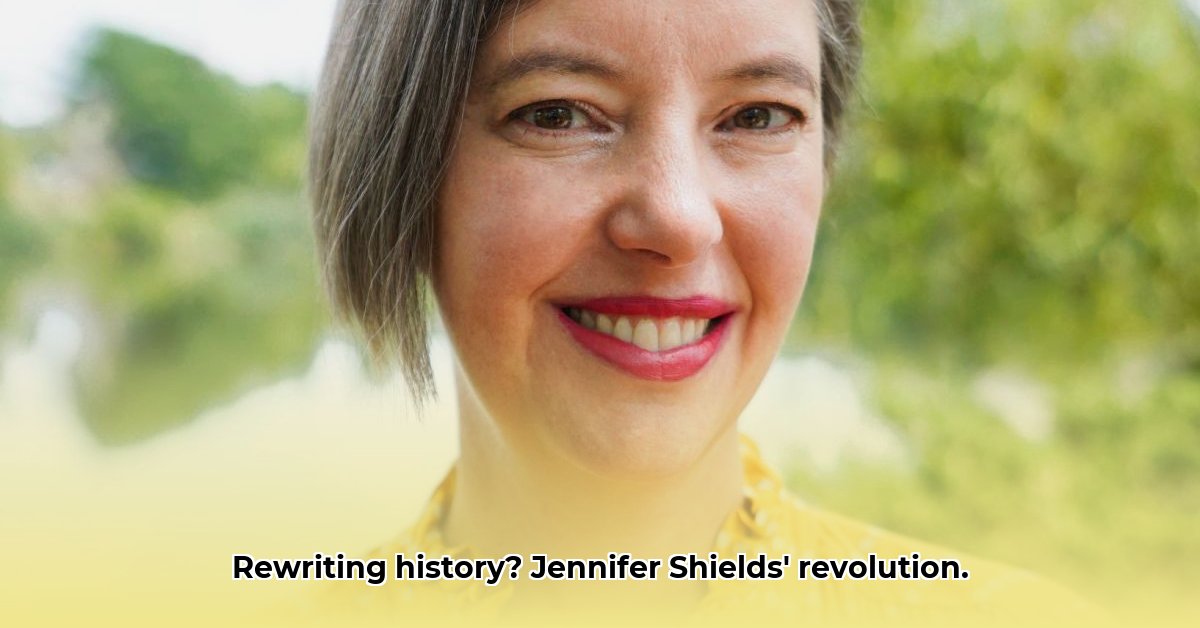
Jennifer Shields is reshaping how we understand and experience cultural heritage, moving beyond static representations to create deeply immersive and accessible encounters with the past. Instead of simply documenting historical sites, Shields crafts multi-sensory experiences that bridge the gap between the physical and digital realms, fostering a richer and more inclusive appreciation of our shared history. This innovative approach is not only transforming how we study and teach history, but also offering unprecedented accessibility to those previously excluded from engaging fully with heritage sites.
The Symphony of Representation: A Multimodal Approach
Shields rejects the limitations of single-media representations—a photograph, a drawing, a written description—arguing that understanding a historical site demands a multi-sensory engagement. Her methodology resembles composing a symphony, where diverse media—photography, 3D modeling, virtual reality experiences, even soundscapes—play complementary roles, creating a holistic and deeply resonant understanding. A high-resolution photograph might capture the grandeur of a building's façade, while a detailed 3D model unveils the intricate craftsmanship of its stone carvings. A virtual reality tour then allows users to explore the space, experiencing its scale and atmosphere firsthand, fostering an unparalleled level of engagement. This layered approach avoids superficial portrayals, instead providing a nuanced and comprehensive understanding that caters to diverse learning styles.
"A single photograph, while visually stunning, can only capture a fleeting moment," explained Dr. Amelia Hernandez, Professor of Digital Humanities at the University of California, Berkeley. "Shields' work recognizes that true understanding requires the integration of multiple perspectives and sensory experiences to reveal the full richness of a historical site."
Immersive Experiences: Virtual and Augmented Reality
Perhaps Shields' most groundbreaking contribution lies in her skillful application of Virtual and Augmented Reality (VR/AR) technologies. These immersive technologies offer unprecedented opportunities to engage with heritage sites, transcending geographical limitations and delivering experiences previously unimaginable. Imagine exploring the ruins of Pompeii, not just through static images, but by virtually walking through the ancient city, interacting with digitally reconstructed buildings and experiencing daily life as it might have been.
However, the power of VR/AR necessitates careful ethical considerations. "The challenge lies in ensuring that virtual representations are accurate, respectful, and ethically sound," noted Dr. David Chen, an expert in digital ethics at Stanford University. "Shields' work highlights the importance of validating virtual reconstructions with rigorous historical research and engaging with the communities whose heritage is being represented."
Broadening Access: Impact and Applications
Shields' research benefits numerous stakeholders, extending far beyond the realm of academia. Her innovative techniques translate into real-world applications, revolutionizing how we approach cultural heritage preservation and engagement:
Educational Transformation: Immersive VR/AR experiences are transforming history education, offering interactive and engaging learning opportunities accessible to diverse student populations.
Enhanced Museum Experiences: Museums can utilize Shields' methods to create profoundly engaging exhibitions that appeal to a wider audience, leading to increased visitation and improved understanding of the displayed artifacts.
Preservation and Documentation: Detailed digital documentation using Shields' approach serves as a vital safeguard, preserving at-risk sites and offering a robust backup in case of damage or destruction.
Universal Accessibility: Her methods provide unprecedented access to cultural heritage for people with disabilities (visual, auditory, or mobility impairments), enabling them to experience history in a meaningful and deeply personal way.
The Future of Heritage Representation: A Collaborative Vision
Jennifer Shields' work represents a paradigm shift in how we perceive and interact with cultural heritage. Her approach emphasizes collaboration, technological innovation, and a profound respect for the communities whose history is being shared. As new technologies emerge, the field of heritage representation will continue to evolve, demanding innovative solutions to address challenges such as the development of universally accepted evaluation standards and the need for accessible and inclusive digital archives. Shields' contributions pave the way for a future where cultural heritage is not just preserved but actively experienced and celebrated by all.